Important Bali Temples and Holy Sites: the Hyped
This is a follow up to my previous post on obscure Bali temples and holy sites. I
1. Pura Ulun Danu Beratan (a/k/a Pura Ulun Danau Bratan)
Perched on the shores of Lake Bratan and encircled by forested mountainsides, Pura Ulun Danau Bratan is one of the more important Bali temples and was founded in the 1600s. (Although I don’t think the bright green concrete frog in the center of the temple is actually … er, authentic.) Dedicated to the water goddess Dewi, it is described in my guidebook as “completely surrounded by the lake.”
It looks super mystical-spiritual-beautiful, right?
It is in theory, but I had to really work my camera angle to make it look like that.
Because in actual fact, once you’ve driven the hour-plus ride from north or south Bali to get here, walked through the parking lot barricaded by a gazillion souvenir shops, paid your 30,000 Rupiah entrance ticket fee, strolled through the bewildering garden area where concrete tigers bare their fangs (coz that just adds to the temple-like-ambiance, you know), then step through an elaborate concrete archway to reach the shores of Lake Bratan, Pura Ulun Danu Beratan actually looks more like this:
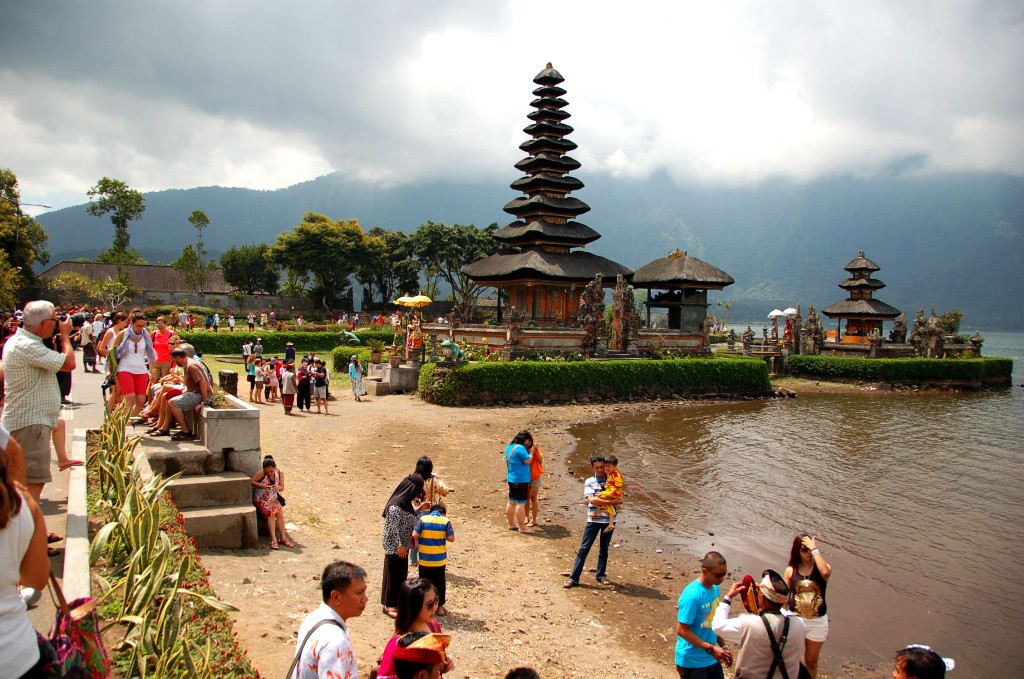
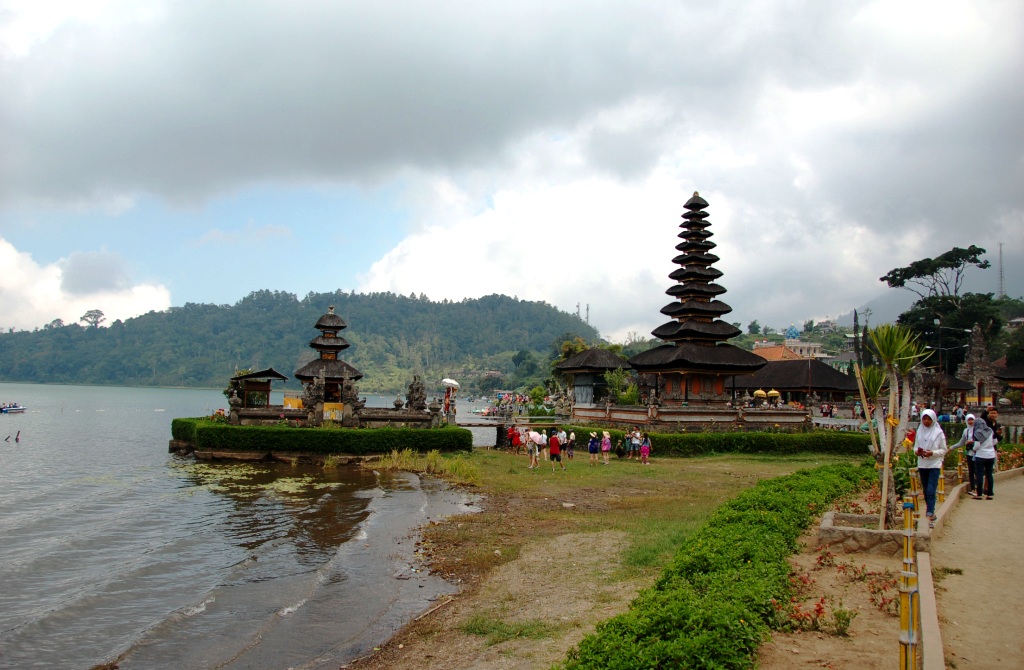
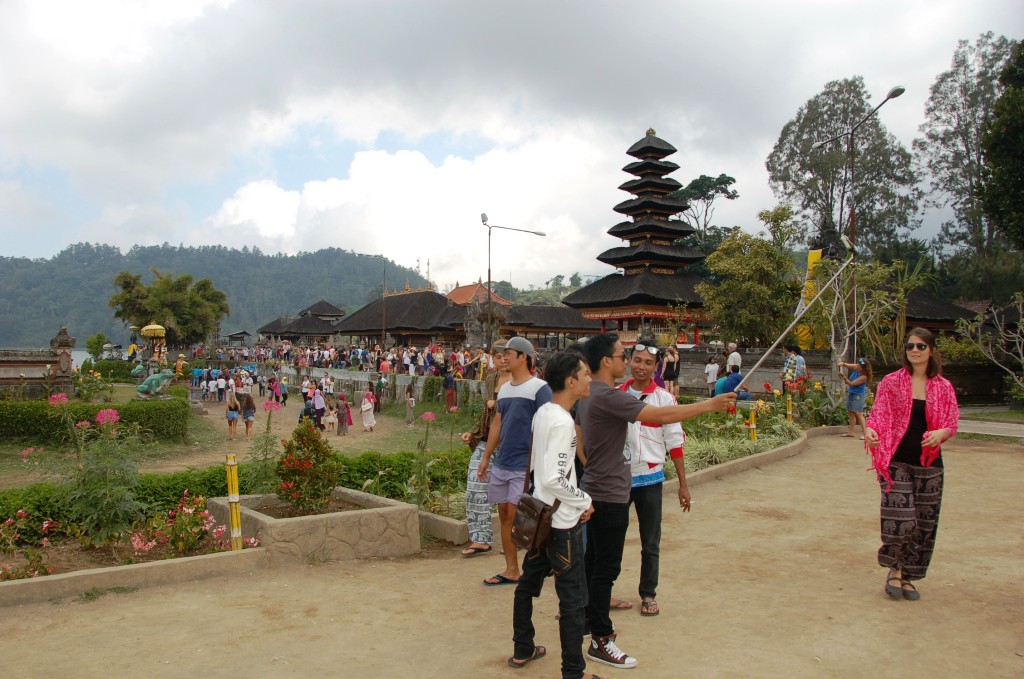
Somewhere in there, a giant, green frog is sittin’ pretty.
And those spiritual temple gardens where weary pilgrims make their way with offerings and supplications for the Goddess Dewi? They look like this:

2. Pura Tanah Lot
Tanah Lot, built on cliffs above the sea on Bali’s southwest coast, is undeniably striking. It’s also the most visited and photographed temple in Bali.
Even in the middle of the day, when the sun blazes down and no pretty sunset vistas are in store, crowds brave major sunburn to trek across the rock and sand at low tide.


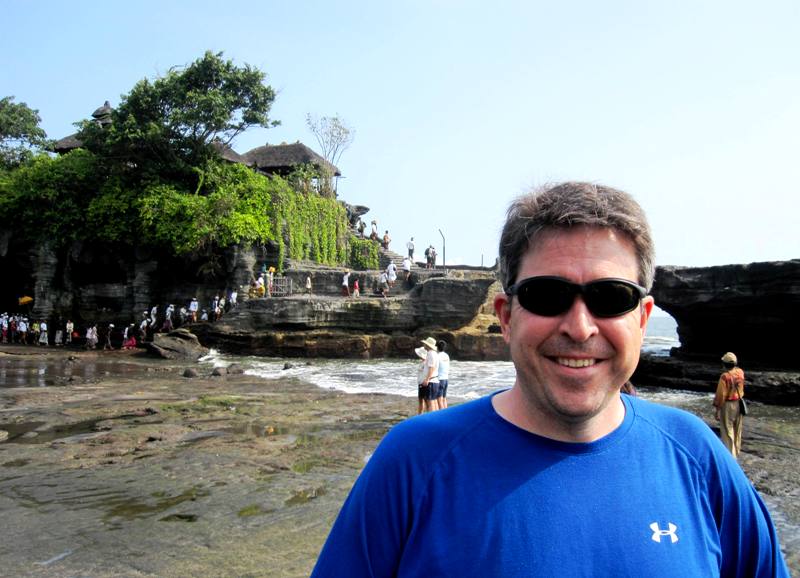
This place is probably the most commercial of all important Bali temples we’ve visited. There’s an opportunity to share your money at every turn, starting with the fairground-like vendors in the parking lot, followed by the long walk through more shops and cafes and street stalls, ending only at that rocky island where more tickets for a sash and entry into the top pagoda are sold.
I get it. I’d probably set up a stall here too if I could. But all of the money flying back and forth and the theme-park-like atmosphere does tend to alter the experience. It probably didn’t help that the floppy-hatted woman making her way over the exposed ocean floor in front of me became disoriented and slipped, cutting her arm against rock. I offered her my wet-wipes, but she just kind of glared at me and walked on. In retrospect, I think she must have felt overwhelmed by the crowds as well.
On the plus side, the vendors were all super nice, and the round, gelatinous rice treats stuffed with palm sugar and rolled in shredded coconut (pictured below) were delicious!
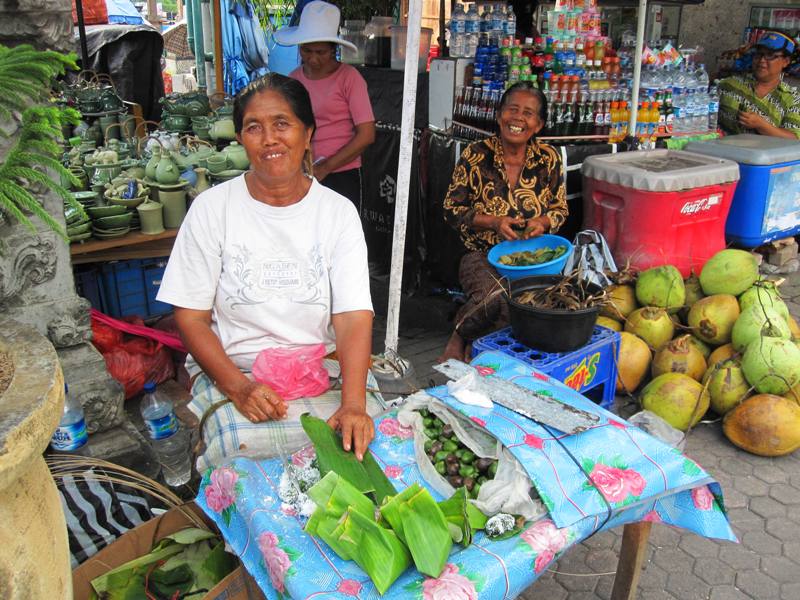
All in all, I’d say a visit to Tanah Lot is one of those things you should do at least once if you are visiting Bali. Otherwise you’ll kick yourself whenever you see those beautiful sunrise photographs in travel brochures, showcasing the temple above crashing waves. At least now, you’ll know what you are — or possibly, are not — missing!
3. Pura Ulu Watu
After Tanah Lot, I’m guessing Pura Ulu Watu might be the second most visited temple in Bali, and definitely one of the premier important Bali temples. Set on cliffs over Bukit Peninsula’s east side, this site is also a legendary surfing spot as well as the destination for the famed Kecak dance performance. Coming here is definitely interesting, if for no other reason than to dodge the mob of macaque monkeys everywhere who are known to excel at pick-pocketing!
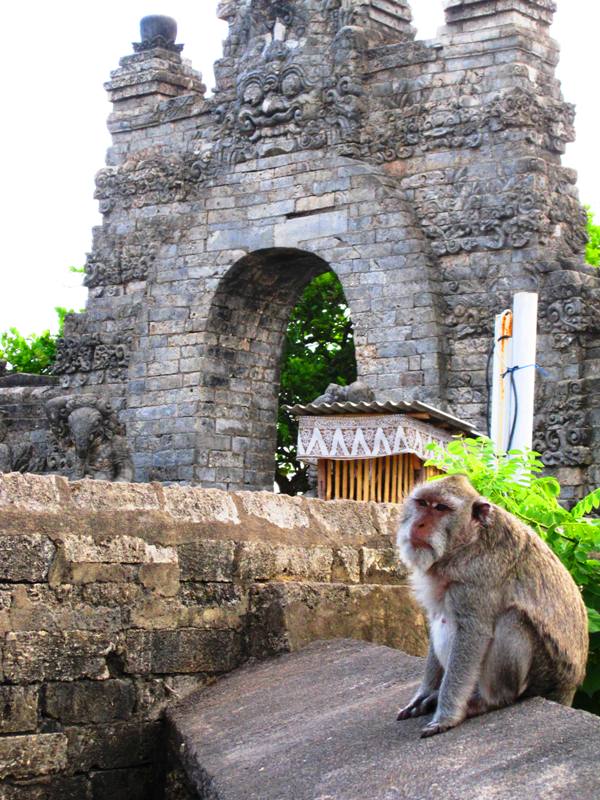
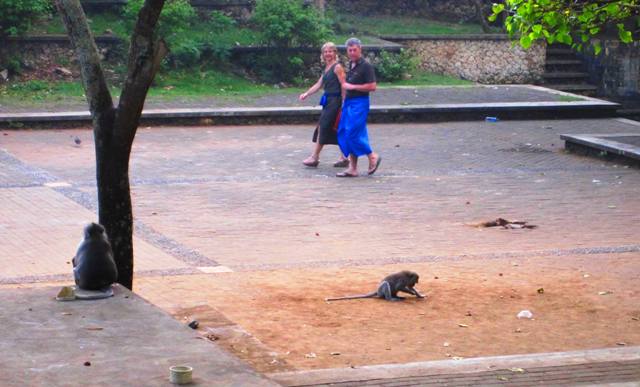
What is left of this important Bali temple is not much (the tiny, thatched-looking pagoda at the edge of the cliff in the photo below shows the temple area), though archaeological remains suggest this holy site dates all the way back to the 10th century. It is believed that the Hindu trinity of Brahma, Vishnu and Shiva become one here, making Pura Ulu Watu especially significant to the Balinese people.

A walkway circles around the cliff, providing views of the Indian Ocean crashing below. This scene is especially popular at sunset, when visitors armed with cameras come for the hour-long Kecak dance held nightly at six pm. To get here, private car (or motorcycle) is necessary as there is no public transport. Mandatory sarongs and sashes can be rented at the entrance.
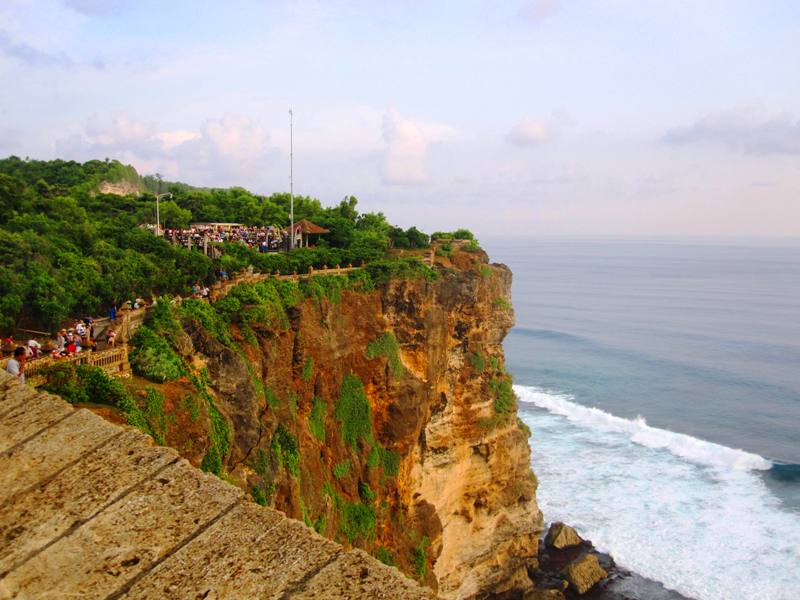

And then there is the Kecak Dance, which is probably what most people come here to see.
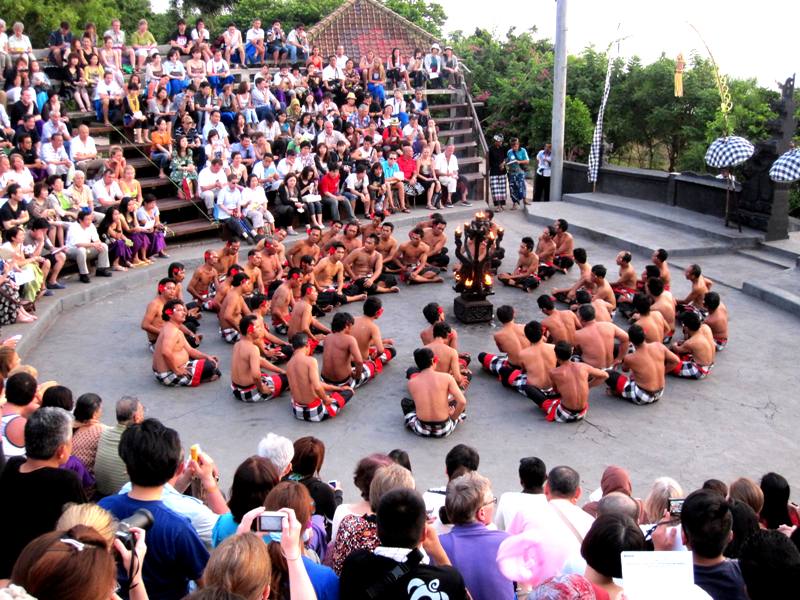
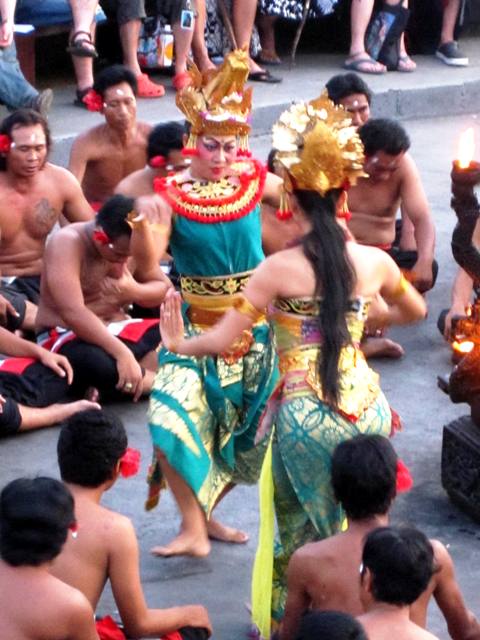

Despite this being a major tourist attraction, this Ramayana drama combined with exorcism ritual is still pretty interesting to watch. In some ways, I think the Kecak dance represents modern Bali: a fusion of traditional culture, religion, adaptation and commercialism.
On a more practical note, I feel morally obligated to warn anyone contemplating this experience to come prepared to sweat. Those cement bleachers bake in the sun all day and they get hot. Really hot. So even in the cool of dusk, you’re more or less a human pot being cooked in a kiln when sitting on those things. After an hour of sweltering there, … er, some people — not me of course — have perspired so much that the back of their (not mine, of course) cute temple sarong looks like they’ve had an accident. Kind of embarrassing.
All in all, Pura Ulu Watu felt to us like an elaborate, beautiful stage. And I guess it should because, despite the historical significance of this temple, the cliffs, sunset and Kecak dance are the main attractions. Worth a visit? Certainly. Just come ready to sweat!
Coming up (though it may be sometime in the future): The Marvelous!
Map of Important Bali Temples and Holy Sites below: The Obcsure, the Hyped and the Marvelous
Orange=Hyped; Green=Obscure; Blue=Marvelous



